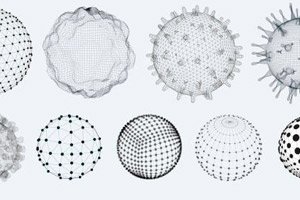
All iLive content is medically reviewed or fact checked to ensure as much factual accuracy as possible.
We have strict sourcing guidelines and only link to reputable media sites, academic research institutions and, whenever possible, medically peer reviewed studies. Note that the numbers in parentheses ([1], [2], etc.) are clickable links to these studies.
If you feel that any of our content is inaccurate, out-of-date, or otherwise questionable, please select it and press Ctrl + Enter.
Who gets infected more often: people from animals, or animals from people?
Last reviewed: 02.07.2025
 ">
">About the circulation of viruses between animals and humans. Many infections have passed to humans from animals. As an example, we can take the same coronavirus infection SARS-CoV2 - the causative agent of the well-known COVID-19, or the deadly Ebola fever virus. In nature, these viruses live in the bodies of bats. The pathogen can be transmitted from animals to humans, and back, or adapt to a new organism and "settle" in it.
If we are talking about viruses that rapidly multiply and transform, then the change of their "place of residence" can be determined by the hereditary information in RNA or DNA. This method is suitable if there is a thoroughly read viral genome and data on the previous location of the virus, information on "relative" strains, variations, etc. All this is necessary to determine the degree of change in the infection.
However, if the pathogen can be transmitted from bats or other animals to humans, does the same process occur in the opposite direction? Many remember how the same coronavirus was periodically detected in pets whose owners were sick with COVID-19. Scientists explain: the virus, in the process of its transition from one organism to another, does not always undergo genetic changes - at least at first. And it does not matter whether the pathogen has any mutations. The main point is its ability to settle and adapt to new structures.
Recently, researchers analyzed how often viruses are transmitted from humans to animals and vice versa. Millions of virus sequences that have accumulated in various information databases were studied. As a result, it turned out that animals are more often infected from humans than humans from animals (the ratio was 64:36). Among viral infections, coronaviruses and the influenza A pathogen were transmitted most often. However, even if these infections are removed from the list, the scales still tip in favor of animal infections from humans.
As experts explain, the circulation of viruses between animals and humans activates the evolutionary changes of the pathogen. At the same time, the infection, which is able to live with equal possibilities in one or another organism, is little subject to change. Apparently, it already has a good degree of adaptation, formed earlier.
It is important to understand that mutual transmission of infection can lead to latent carriage and other problems. It is difficult to monitor such processes, but it is necessary. That is why joint work of specialists of different profiles is so important, including biologists, zoologists, infectious disease virologists, veterinarians and ecologists.
The full version of the article is available on the Nature Ecology & Evolution journal page
